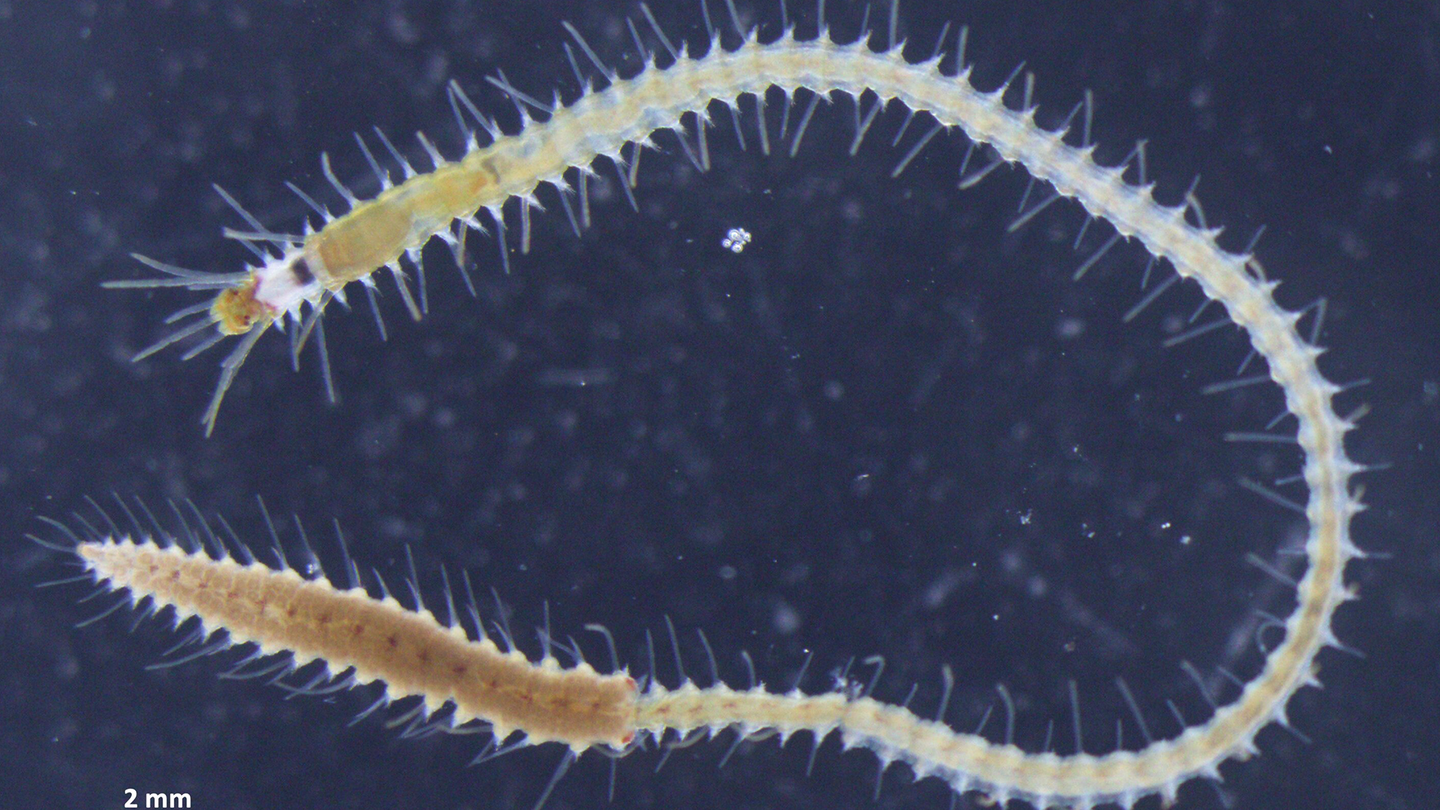Why these sea worms detach their butts to reproduce
Biologists might be closer to solving the mystery behind the Japanese green syllid worm's reproductive behavior.

It’s been a wormy, sexual head-scratcher for years. The Japanese green syllid worm Megasyllis nipponica detaches its butt in order to reproduce. But how do these algae-eating invertebrates do this? The process could come down to some developmental genes, according to a study published November 22 in the journal Scientific Reports.
[Related: The jumping worm invasion may be less worrisome than it sounds.]
Bye bye, butt
Some segmented sea worms like the syllid worm go through a reproductive process called stolonization. The stolon is the worm’s posterior organ and it is full of eggs or sperm depending on the worm’s sex. During stolonization, the stolon completely detaches from the rest of the worm’s body for reproduction.
This detached butt swims around by itself and spawns when it meets another stolon of the opposite sex. This autonomous swimming is believed to protect the original body of the worm from dangers in the environment and help the eggs and sperm travel longer distances.
In order to swim by themselves, the stolon have to develop their own eyes, antennae, and swimming bristles while still attached to their original body. How this happens has been a mystery. The formation of the stolon itself begins when the gonads near the worm’s butt mature. A head is then formed in the front of the developing stolon, with the eyes, antennae, and swimming bristles following close behind. It develops its nerves and the ability to sense and behave independently before the stolon detaches from the rest of the body.
Hot hox genes
In the new study, a team from the University of Tokyo looked into how the stolon’s head is formed in the first place. The researchers investigated the developmental gene expression patterns in worms as they were sexually maturing. A well-known group of genes that determine body part formation called hox genes help define the head regions of various animals. The team found that hox genes are expressed more in the head region of the stolon. The genes are not typically expressed as much in the middle of the body, except for when the gonads are developing. During this time, the hox genes are highly expressed in the worm’s middle and butt.
“This shows how normal developmental processes are modified to fit the life history of animals with unique reproductive styles,” study co-author and University of Tokyo marine biologist Toru Miura said in a statement.
[Related: These newly discovered bioluminescent sea worms are named after Japanese folklore.]
Hox genes also determine the segmentation along the worm’s body. The team thought that the hox genes would be expressed differently along the invisible line that runs from the head of the worm to the back end.
“Interestingly, the expressions of Hox genes that determine body-part identity were constant during the process,” said Miura.
Because of this consistency, the stolon does not have a separatedigestive tract. It also has repeated uniform body segments, except for in its head and tail.
“This indicates that only the head part is induced at the posterior body part to control spawning behavior for reproduction,” said Miura.
The study showed the developmental mechanism of stolons for the first time and sparked more investigation into this reproductive method. Miura and the team hope to clarify the sex determination mechanism and the endocrine regulations during the worm’s reproductive cycles in future studies.